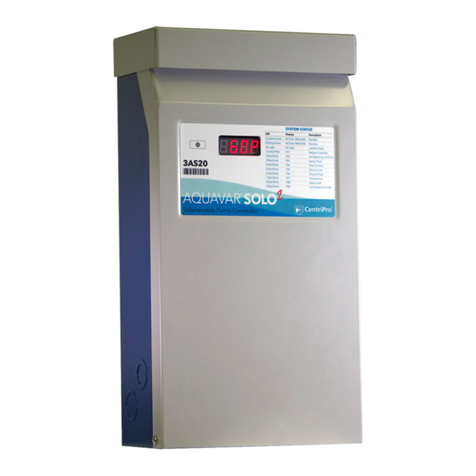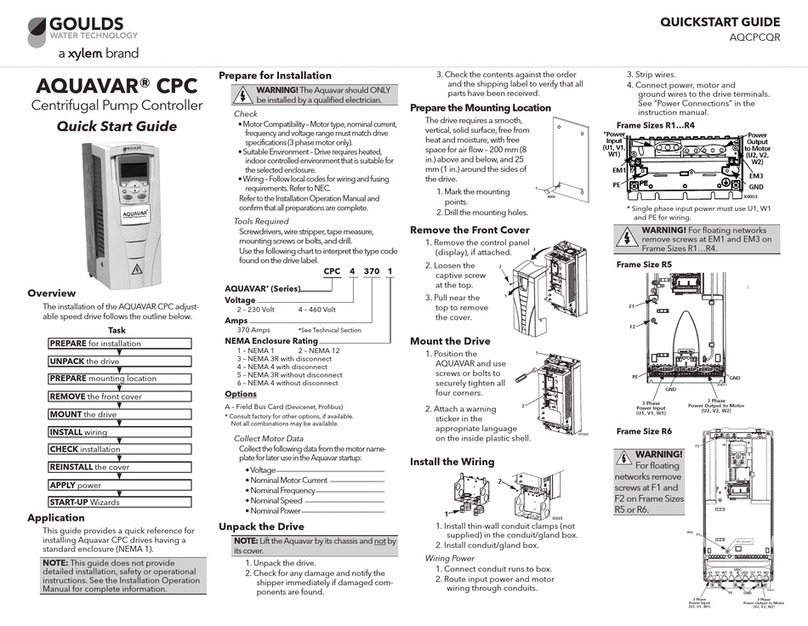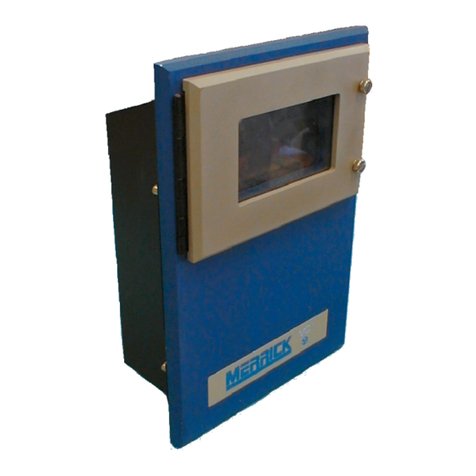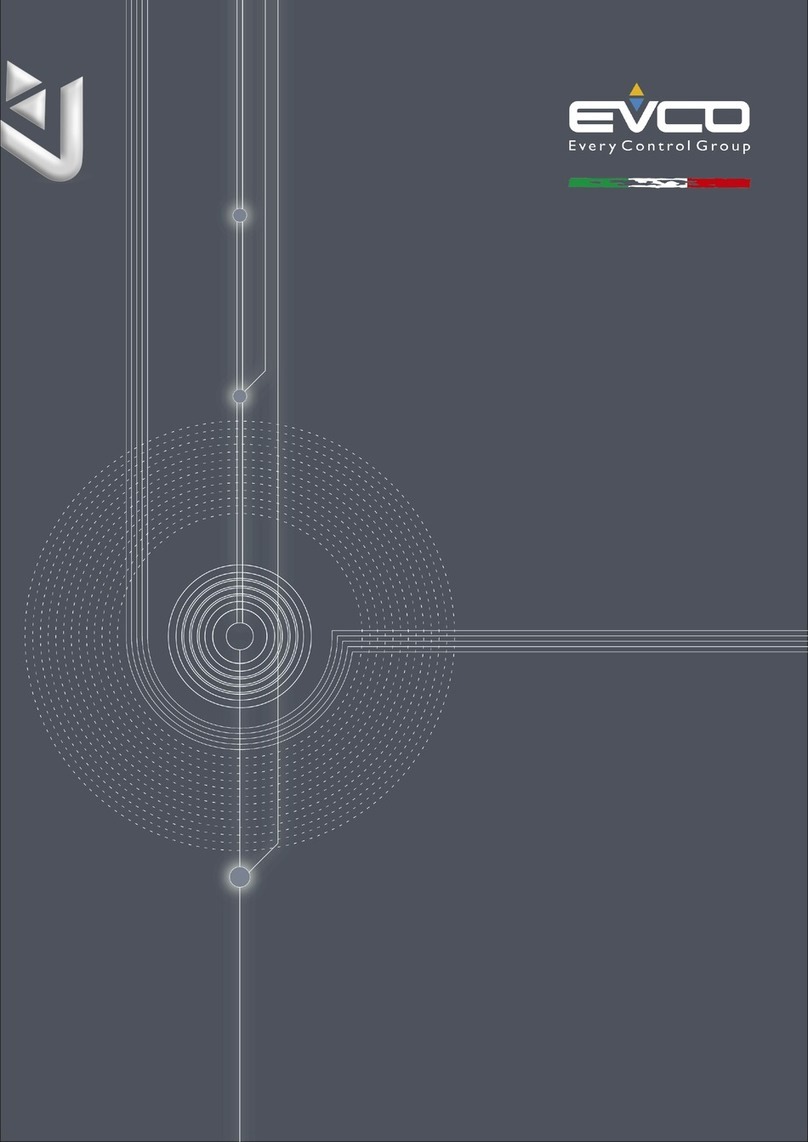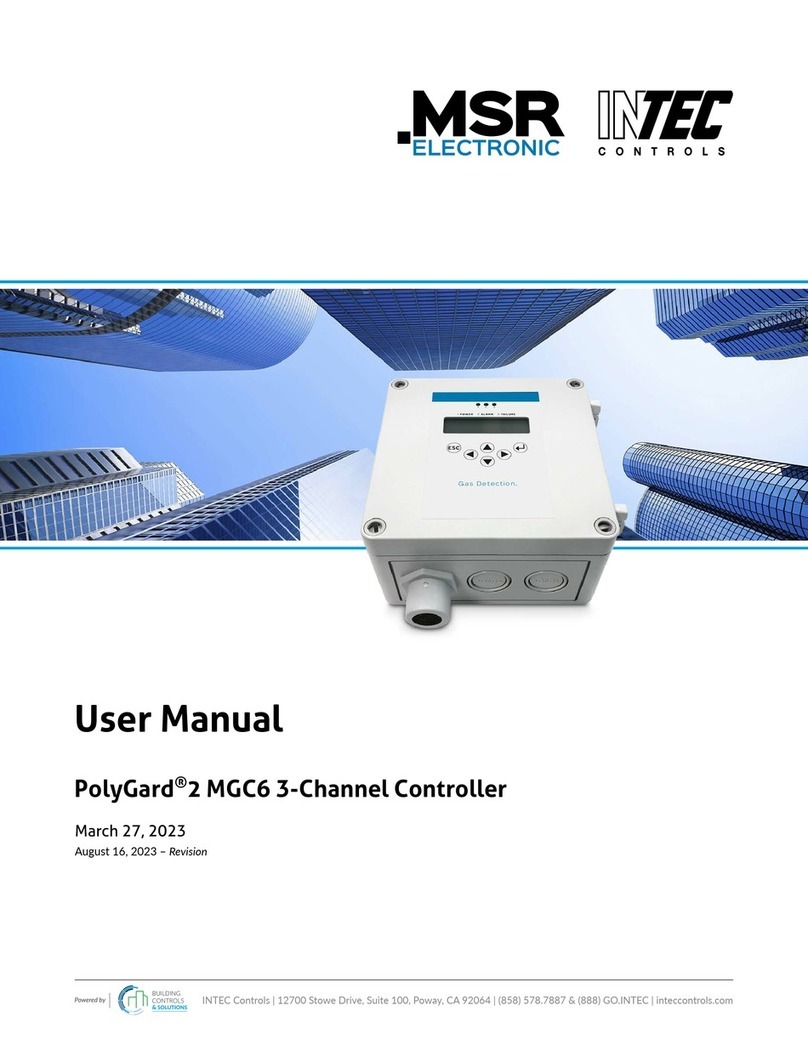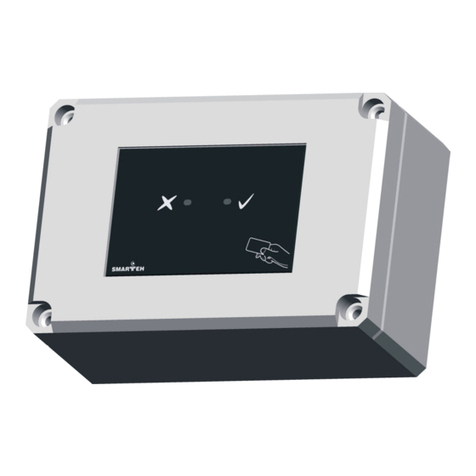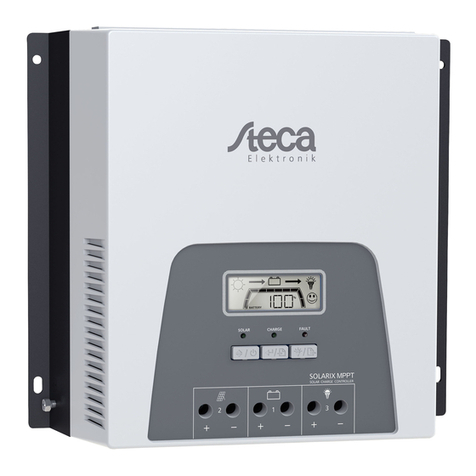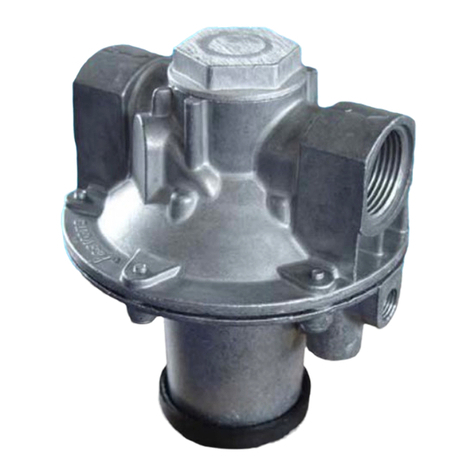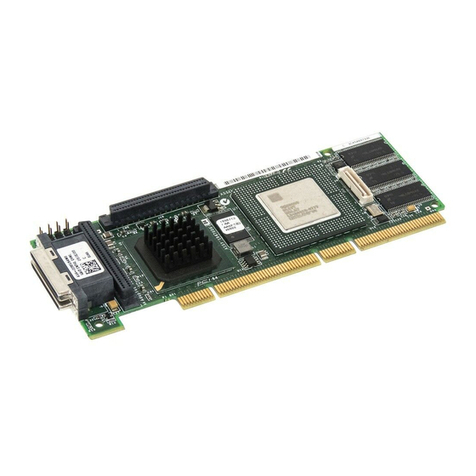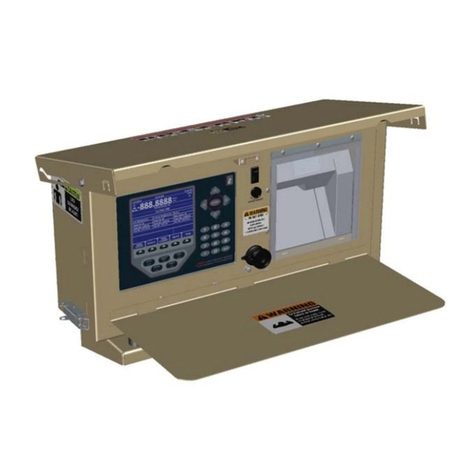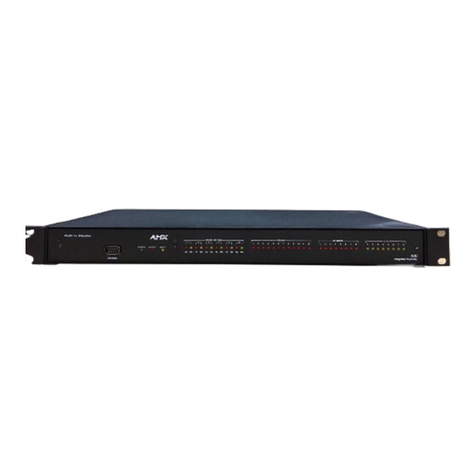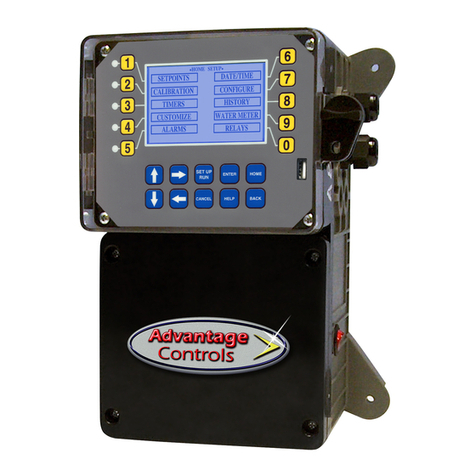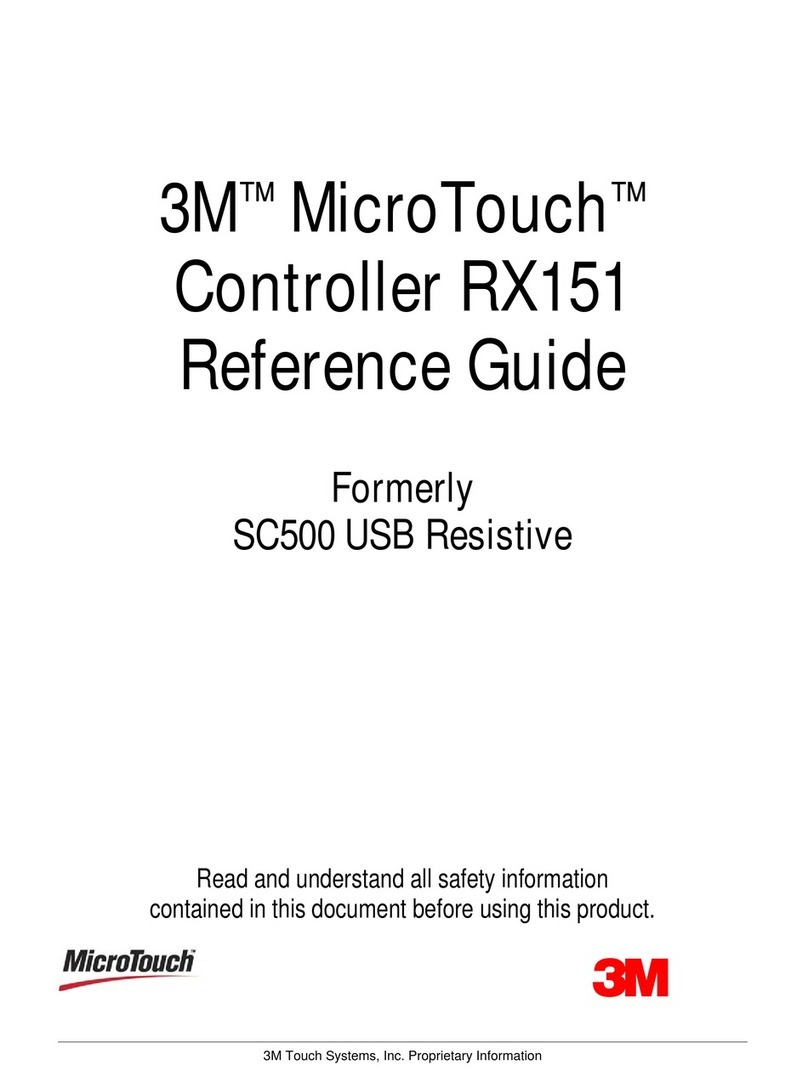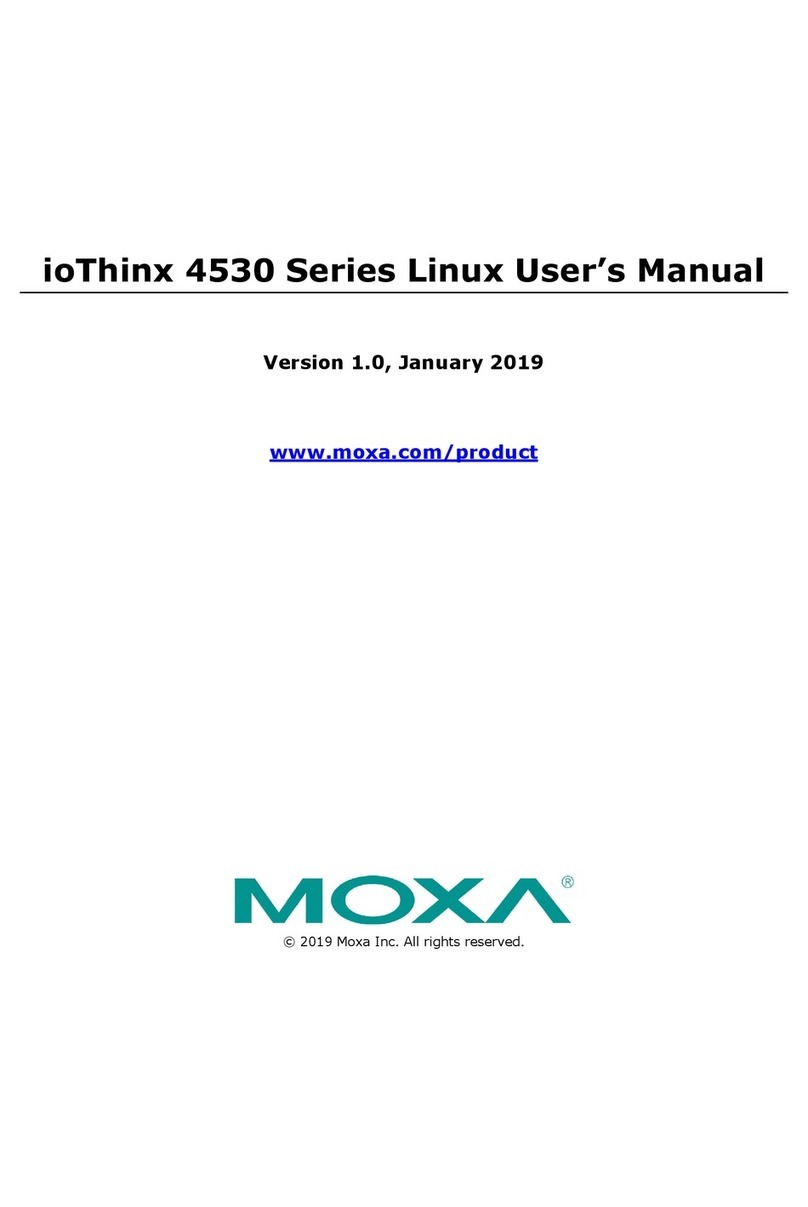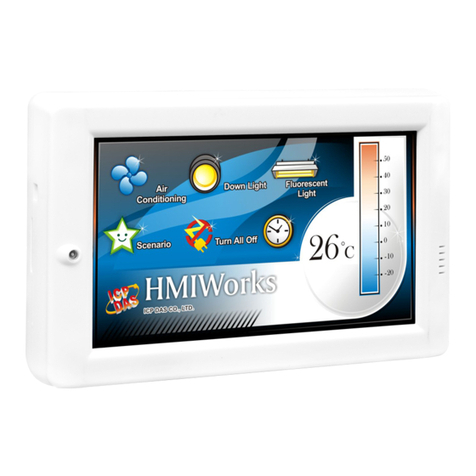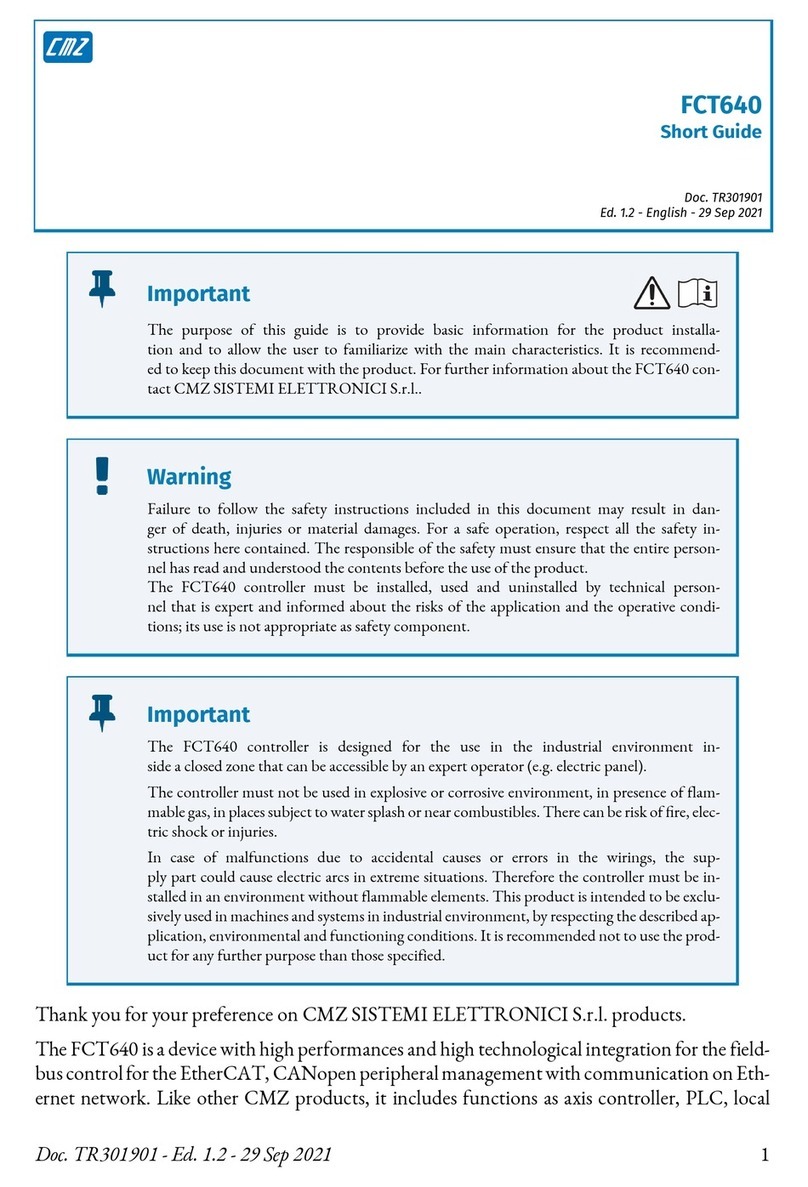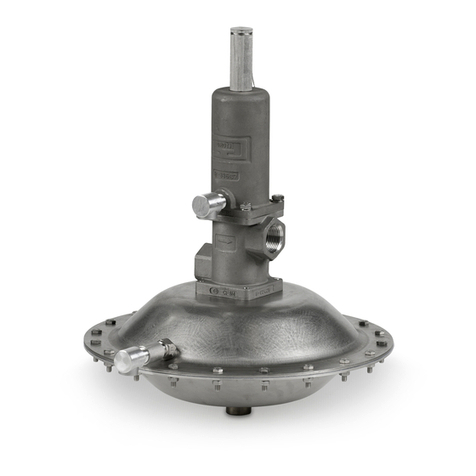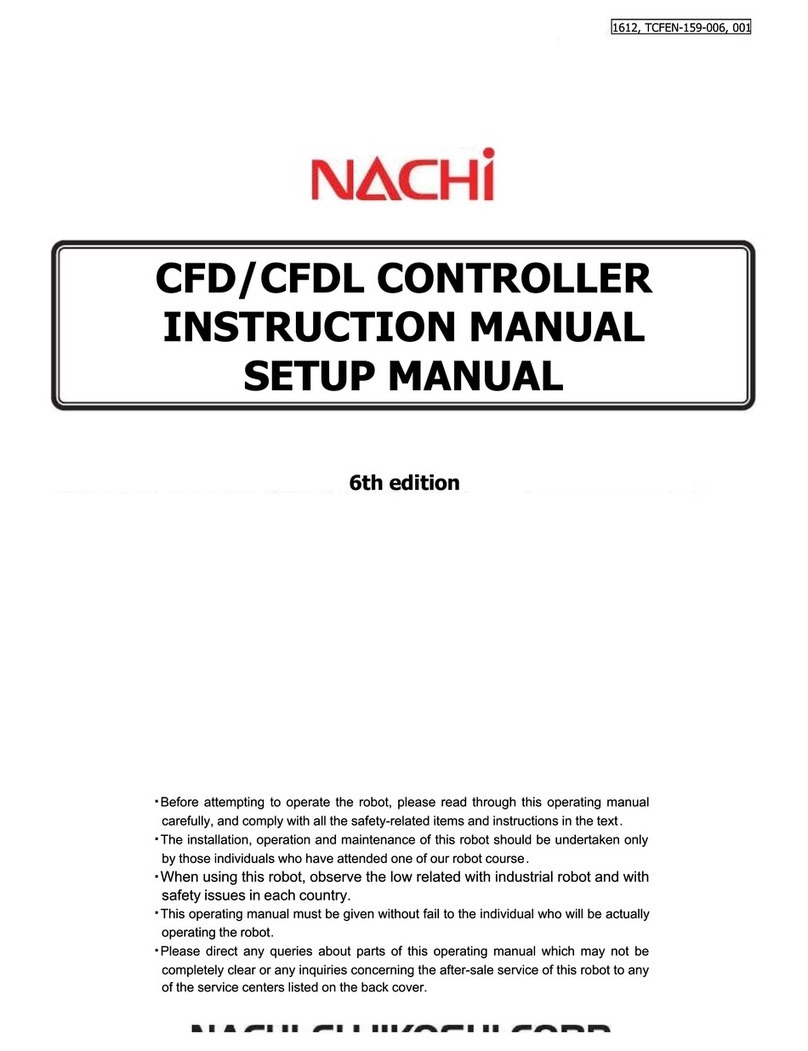Goulds Aquavar ABII Operating instructions

UL
®
CUS
Aquavar ABII Controller
VARIABLE SPEED PUMP CONTROL
INSTALLATION, OPERATION AND TROUBLESHOOTING MANUAL
INSTRUCTION MANUAL
IM156R05
MODELS COVERED:
1151AB2 (115V, 4.2A), 1AB2 (230V, 4.2A),
2AB2 (230V, 6.9A)

2
NOTE:
• Use Copper wire only.
• Suitable for use on a circuit capable of delivering not more than 5000 RMS
symmetrical amperes. Branch circuit protection provided by fuses.
• Suitable for use in a pollution degree 2 micro-environment.
• Motor overload protection provided at 110% of full load current.
• In order to maintain the environmental rating integrity of the enclosure, all
openings must be closed by equipment rated 3, 3R, 3S, 4, 4X, 6 or 6P.
• Maximum ambient temperature is 50º C.
Owner’s Information
Controller Model Number:
Controller Serial Number:
Pump Model Number:
Pump Serial Number:
Motor Model Number:
Motor SFA:
Tank Serial Number:
Installer:
Installer Telephone Number:
Installation Date:
Wire Lengths (Feet)
Service Entrance to Controller:
Controller to Motor:
Incoming Voltage:
Owner’s Information Table of Contents
SUBJECT PAGE
1. Safety Instructions ................................................... 3
2. System Components ................................................ 3
3. System Design ......................................................... 4
4. Piping ...................................................................... 5
5. Mounting the Controller ......................................... 5
6. Power Supply and Wiring ........................................ 6
7. Starting the System ............................................... 6-7
8. Diagrams .............................................................. 8-9
9. Troubleshooting ............................................... 10-11
10. Controller Dimensions .......................................... 11
11. Limited Warranty .................................................. 12
Table of Contents
NOTICE: RECORD THE MODEL NUMBERS
AND SERIAL NUMBERS FROM THE
PUMP AND CONTROLLER IN THIS
INSTRUCTION MANUAL FOR FUTURE
REFERENCE. GIVE IT TO THE OWNER
OR AFFIX IT TO THE CONTROLLER
WHEN FINISHED WITH THE
INSTALLATION.

3
Hazardous
voltage
DANGER
Hazardous
Pressure
CAUTION
1: SAFETY INSTRUCTIONS
TO AVOID SERIOUS OR FATAL PERSONAL INJURY
OR MAJOR PROPERTY DAMAGE, READ AND
FOLLOW ALL SAFETY INSTRUCTIONS IN MANUAL
AND ON EQUIPMENT.
THIS MANUAL IS INTENDED TO ASSIST IN THE
INSTALLATION AND OPERATION OF THIS UNIT
AND MUST BE KEPT WITH THE UNIT.
This is a SAFETY ALERT SYMBOL.
When you see this symbol on the
pump, the controller or in the manual,
look for one of the following signal
words and be alert to the potential for
personal injury or property damage.
Indicates an imminently hazardous
situation which, if not avoided, will
result in death or serious injury.
Indicates a potentially hazardous situa-
tion which, if not avoided, could result
in death or serious injury.
Indicates a potentially hazardous situ-
ation which, if not avoided, may result
in minor or moderate injury.
Used without a safety alert symbol
indicates a potentially hazardous situa-
tion which, if not avoided, could result
in property damage.
NOTE: INDICATES SPECIAL
INSTRUCTIONS WHICH ARE
VERY IMPORTANT AND MUST BE
FOLLOWED.
THOROUGHLY REVIEW ALL INSTRUCTIONS
AND WARNINGS PRIOR TO PERFORMING ANY
WORK ON THIS CONTROLLER.
MAINTAIN ALL SAFETY DECALS.
ALL OPERATING INSTRUCTIONS MUST BE
READ, UNDERSTOOD, AND FOLLOWED BY
THE OPERATING PERSONNEL. GOULDS WATER
TECHNOLOGY ACCEPTS NO LIABILITY FOR
DAMAGES OR OPERATING DISORDERS WHICH
ARE THE RESULT OF NON-COMPLIANCE WITH
THE OPERATING INSTRUCTIONS.
1. This manual is intended to assist in the installation,
operation and repair of the system and must be kept
with the system.
2. Installation and maintenance MUST be performed by
properly trained and qualied personnel.
3. Review all instructions and warnings prior to perform-
ing any work on the system.
4. Any safety decals MUST be left on the controller and
pump.
5. The system MUST be disconnected from
the main power supply before attempt-
ing any operation or maintenance on the
DANGER
WARNING
CAUTION
CAUTION
1: SAFETY INSTRUCTIONS electrical or mechanical part of the system. Failure to
disconnect electrical power before attempting any op-
eration or maintenance can result in electrical shock,
burns or death.
6. When in operation, the motor and pump
could start unexpectedly and cause seri-
ous injury.
2: SYSTEM COMPONENTS
Please review the Aquavar ABII components and insure
that you have all the parts and are familiar with their
names. Be sure to inspect all components Goulds Water
Technology supplies for shipping damage.
Aquavar ABII:
1. Pump with Motor
2. Aquavar ABII Controller with Integral Pressure
Sensor Cable
3. Pressure Tank (supplied on some models)
4. Pressure Sensor
5. Mounting Kit
6. Tank Tee with Pipe Plug
7. Pressure Gauge
WARNING
DO NOT power the unit or run the
pump until all electrical and plumb-
ing connections, especially the pressure
sensor connection, are completed. The
pump should not be run dry. All electrical
work must be performed by a qualied
technician. Always follow the National
Electrical Code (NEC), or the Canadian Electrical
Code (CEC) as well as all local, state and provincial
codes. Code questions should be directed to your local
electrical inspector. Failure to follow electrical codes
and OSHA safety standards may result in personal in-
jury or equipment damage. Failure to follow manufac-
turer's installation instructions may result in electrical
shock, re hazard, personal injury, death, damage to
equipment, unsatisfactory performance and may void
manufacturer's warranty.
2: SYSTEM COMPONENTS
WARNING
Hazardous
voltage
Hazardous
Pressure
CAUTION

4
Diagram 1
Aquavar ABII Installation
for Well Pump System
Note: A check
valve or double
check valve may
be required on
the suction side
of the pump.
Consult local
codes.
Diagram 2
Aquavar ABII Installation
for Municipal Water
System
Home Supply Water Main
Check Valve
Isolation Valves
Unions
Check Valve
To Drain
Relief
Valve
Gauge
Tank
Aquavar ABII
Controller
Circuit
Breaker
Disconnect Transducer
Motor/Pump
Home Supply Well Supply
Check Valve
Isolation Valves
Unions
Check Valve
To Drain
Relief
Valve
Gauge
Tank
Aquavar ABII
Controller
Circuit
Breaker
Disconnect
Atmospheric
Storage Tank
Transducer
Motor/Pump
Isolation
Valve
3: SYSTEM DESIGN
NOTE: Systems MUST be designed by qualied technicians only and meet all applicable state and local code
requirements.
The following diagrams show a typical system using the Aquavar ABII Constant Pressure System. Connection can be
made directly to a water supply or water can be drawn from a supply tank. Diagram #1 shows a typical set up for a
supply tank.
Diagram #2 shows a set-up for municipal water connection. This allows pump maintenance without main line shut-off.
3: SYSTEM DESIGN

5
4: PIPING
General
NOTE: All plumbing work must be performed by a
qualied technician. Always follow all local, state and
provincial codes.
A proper installation requires a pressure relief valve, a ¼"
female N.P.T. threaded tting (found on tank tee) for the
pressure sensor, and properly sized pipe. Piping should
be no smaller than the pump discharge and/or suction
connections. Piping should be kept as short as possible.
Avoid the use of unnecessary ttings to minimize friction
losses.
Some pump and motor combinations
supplied with this system can create over
200 PSI. Select pipe and ttings accordingly
per your pipe suppliers’ recommendation. Consult local
codes for piping requirements in your area.
All joints must be airtight. Use Teon tape or another
type of pipe sealant to seal threaded connections. Please
be careful when using thread sealant as any excess that
gets inside the pipe may plug the pressure sensor.
Galvanized ttings or pipe should never be connected
directly to the stainless steel discharge head or casing
as galvanic corrosion may occur. Barb type connectors
should always be double clamped.
Pressure Tank, Pressure Relief Valve and
Discharge Piping
The standard Hydro-Pro tanks have a pre-charge of 38
PSI. You may set the tank pre-charge anywhere between
this value and 10 PSI below the system operating
pressure. Use the higher tank pre-charge setting if the
system drifts over 5 PSI at a constant ow rate. Use
only “pre-charged” tanks on this system. Do not use
galvanized tanks. Select an area that is always above 34º
F (1.1º C) in which to install the tank and pressure relief
valve. If this is an area where a water leak or pressure
relief valve blow-off may damage property, connect a
drain line to the pressure relief valve. Run the drain line
from the pressure relief valve to a suitable drain or to
an area where water will not damage property. Use the
supplied tank tee to connect the discharge pipe to the
pressure tank and house plumbing. It is allowable to
pump to multiple locations.
Maximum working pressure of most Hy-
droPro tanks is 125 psi. Check the tank
label or instruction manual to verify data.
Installing the Pump
WARNING: Risk of electric
shock - This pump system has
not been investigated for use
in swimming pool areas.
Plumb suction and discharge of pump into
piping. Locate the pump as near liquid
4: PIPING
Hazardous
Pressure
CAUTION
WARNING
Hazardous
voltage
Hazardous
Pressure
CAUTION
Hazardous
Pressure
CAUTION
source as possible. When pumping out of an atmospheric
tank locate the pump below the level of the liquid in the
tank. All piping must be supported independently of the
pump. Be sure that suction and discharge piping are in
line with the suction and discharge of the pump. Install
a check valve between the discharge of the pump and
the pressure sensor and tank. For additional information
refer to Installation, Operation and Maintenance
Instructions supplied with the pump.
Installing the Pressure Sensor
Install the pressure sensor in the tank tee provided with
the unit. The pressure sensor cable supplied with the
controller is 120 inches long. Locate the controller so
there will be enough cable to properly install the pressure
sensor.
Do not install any shut-off valves, lters or
ow/pressure control devices (except for
a check valve) between the pressure sen-
sor and the discharge of the pump as this could create a
hazardous situation.
Use ONLY the pressure sensor provided with the unit.
Install the pressure sensor into one of the ¼" holes on the
tank tee provided in the kit. Install the pressure sensor
vertically to avoid accumulation of debris in the sensor
port. Do not install the tank tee with the ¼" holes facing
down. Align the connector on the end of the pressure
sensor cable with the mating connector on the pressure
sensor and push it on. The tab will lock it in place.
Prevent water from following the cable and entering
sensor connector by creating a “drip loop” in the cable.
5: MOUNTING THE CONTROLLER
General
Mount the controller in a well ventilated, shaded area
using the supplied mounting kit. The controller must be
mounted vertically. Be sure to leave 8 inches of free air
space on every side of the unit. The controller must be
in an area with an ambient between 34º F (1.1º C) and
104º F (40º C). Model 2AB2 will automatically decrease
(derate) the maximum output current of the drive (6.9A)
if the ambient temperature exceeds 104º F
(40º C). The maximum output current of the drive will
be decreased by 0.069A for every degree Fahrenheit
above 104º F, or -1%/º F. The maximum output current
of the drive will be decreased by 0.12A for every degree
Celsius above 40º C, or -1.75%/º C. Model 1AB2
does not require ambient derating and will maintain
a maximum output current of 4.2A in high ambient
temperatures. If installation is more than 3300 feet above
sea level, drive output should also be derated by 2% per
1000 feet above 3300 feet.
NOTE: Do not block the heat sink (ns) and do not
set anything on the units.
WARNING
5: MOUNTING THE CONTROLLER
Hazardous
Pressure
CAUTION

6
The controller access cover should always
be securely fastened to the control box
due to the dangerous voltage/shock hazard
inside the unit.
6: POWER SUPPLY AND WIRING
Power Supply
The 1151AB2 Controller requires a single
phase power supply of 115 volts +/– 15%.
The 1AB2 and 2AB2 Controllers require
a single phase power supply of 230 volts +/– 15%. All
controllers require a dedicated 20 amp two-pole circuit
breaker. A dedicated circuit means no other appliances
use the same circuit! The output power from the motor
controller is three-phase, variable frequency and variable
voltage. Maximum output voltage and frequency are
line input voltage and 60 Hz, respectively. Low supply
voltage will reduce pump performance.
NOTE: Installation and maintenance MUST be per-
formed by properly trained and qualied personnel.
Always follow the National Electric Code or Canadian
Electric Code, as well as all local, state and provincial
codes when wiring the system.
Wire and Conduit
Do not use wire smaller than 14 AWG. Use of
Metal Conduit with Metal Conduit Connectors is
recommended for all electrical connections.
Output Power Connections
Connect the motor leads for 230 volt or
208 volt operation using the nameplate as a
reference. Connect the output power leads
from the controller to the 3 motor leads in the conduit
box on the motor. Connect the ground (green) output
power lead to the ground screw in the conduit box on
the motor. This step is performed in its entirety at the
factory for complete systems. See diagram 4 for details.
NOTE: If the pump has more than 50 feet of wire
from the controller, consult factory for selection of an
output load lter (load reactor).
Connecting Input Power
Connect the single-phase power supply
leads and Safety Ground wire from a 20
amp two-pole circuit breaker (in the OFF
position) to one side of a 20-amp two-pole disconnect
switch. Connect the input power leads supplied with
the controller to the other side of the disconnect switch.
Be sure to use Metal Conduit with Metal Conduit
Connectors for electrical connections.
The controller has a high leakage current
to ground. The terminals marked "GND"
in the controller must be connected to the
safety ground from the electrical service entrance. Failure
to properly ground the controller or motor will create an
electrical shock hazard.
NOTE: Do not use GFCI protection with this control-
ler. Nuisance tripping will result.
7: STARTING THE SYSTEM
Status Code Indicator Light is not a voltage
indicator! Always turn off disconnect switch
and circuit breaker before servicing.
Once the controller is powered it will re-
main electrically charged for 5 minutes after
power is turned off. Wait 5 minutes after
disconnecting power before opening controller access
cover as there is a severe shock hazard.
Setting the Motor Overload Switches
When the unit is powered, the Motor Over-
load Setting Switches are at a high voltage
potential. DO NOT touch the Motor Over-
load Setting Switches while the power is on.
The Motor Overload Setting Switches adjust the level
of motor overload current protection needed to protect
the motor from damage due to overcurrent conditions.
Turn the circuit breaker and disconnect switch to the off
position, and wait 5 minutes. Remove controller access
cover. On the inside of the access cover is the Motor
Overload Setting table.
See Diagram 6 for details.
This table
shows the switch setting for the desired Motor Overload
Setting. Read the Service Factor Amps off the motor
nameplate. Use the Motor Overload Setting table to
match the Service Factor Amps (SF Amps) of the motor
to the correct switch setting.
See Diagram 5 for details.
Set
the Motor Overload Switches according to the correct
combination on the table. If the Service Factor Amps
of the motor do not match any of the Motor Overload
Settings, use the next lowest switch setting.
See Diagram 3
for details
.
NOTE: The Motor Overload Setting Switches are
preset at the factory for complete systems.
Failure to perform this step will result in
loss of Motor Overload Protection and
will void the Motor Warranty. Nuisance Motor Over-
load Error tripping or motor damage can occur if these
switches are not set properly.
Setting the Pressure
Turn the circuit breaker and disconnect switch to the off
position, and wait 5 minutes. Remove controller access
cover. Open a faucet in the system and turn the breaker/
disconnect switch to the ON position. The pump will
start and pressure will increase to the factory preset 50
PSI. After the pressure has stabilized, use the Increase/
Decrease Pressure Adjust Pushbuttons on the right-hand
side of the controller to adjust the pressure setting.
WARNING
Hazardous
voltage
Hazardous
voltage
DANGER
Hazardous
voltage
DANGER
Hazardous
voltage
DANGER
Hazardous
voltage
DANGER
6: POWER SUPPLY AND WIRING 7: STARTING THE SYSTEM
Hazardous
voltage
DANGER
Hazardous
voltage
DANGER
Hazardous
voltage
DANGER
CAUTION

7
Push and Hold the Increase or Decrease Pressure Adjust
Pushbutton until the desired pressure setting is reached.
The new pressure setting is automatically saved. Close
the faucet and turn power to controller off. Wait 5
minutes before installing the controller access cover.
NOTE: The maximum allowable pressure setting is
85 psi.
Setting the Application Switches
When the unit is powered, the Application
Setting Switches are at a high voltage poten-
tial. DO NOT touch the Application Setting
Switches while the power is on.
The controller has 6 possible Application Settings.
These settings are used to adjust the Minimum Speed
of the motor and the Ramp Setting, or acceleration and
deceleration ramp. This allows the controller to t a wide
range of applications.
Before adjusting the Application Switches, turn the
circuit breaker and disconnect switch to the off position.
Wait 5 minutes. Remove the controller access cover. On
the inside of the access cover is the Application Switch
Setting Table. See Diagram 6 for details. This table shows
the switch setting needed for the desired system response.
See Diagram 3 for details.
Select a Minimum Speed of 10 Hz if the pressure at the
pump’s suction is within 20 PSI of the desired pressure
setting. Select a Minimum Speed of 30Hz if the pressure
at the pump’s suction is more than 20 PSI below the
desired pressure setting, if pumping from a tank or if
drawing a suction lift.
Changing the Ramp Setting changes how fast the
controller can change the speed of the motor. A Slow
Ramp Setting allows the controller to work better in
applications where the average demand for water is low
(less than 3GPM or about 1 faucet). A Fast Ramp Setting
allows the controller to work better in applications
where the demand for water is high because the motor is
allowed to change speed faster.
NOTE: The Application Switches are preset at the
factory to “0000” or Minimum Speed = 30 Hz, Ramp
Setting = Fast.
Motor Rotation Direction
If the pressure or ow seems low, check motor rotation
direction. Turn the circuit breaker and disconnect
switch to the off position, and wait 5 minutes. Switch
any two leads on the controller output (T1, T2, or T3).
Turn the circuit breaker and disconnect switch to the on
position. Observe pressure and ow. If pressure or ow
still seems low check plumbing.
NOTE: It is possible for the pump to maintain
constant pressure with a low ow or a high positive
suction head even if the pump is rotating backwards.
While the pump is running, use an amp probe on one
of the output power leads connected to the motor and
compare the current draw between the two rotation
directions. The lowest current reading indicates the
pump is running in the correct direction.
System Status
The controller is always powered. A Solid Green Status
Code indicates that the pump is in standby mode (pump
not running) or that the line input voltage is low.
Status Code Indicator Light is not a voltage
indicator! Always turn off disconnect switch
and circuit breaker and wait 5 minutes
before servicing.
A Blinking Green Status Code indicates that the pump
is running. A Blinking or Solid Red Light indicates a
problem with the controller. Refer to the access cover
side panel or Diagram 6 for Status Codes. See Section 9
for more details.
Hazardous
voltage
DANGER
Hazardous
voltage
DANGER

8
Hazardous
voltage
DANGER
When the unit is powered, the Motor Overload and Application Setting Switches are at a high voltage
potential. Always turn off the disconnect switch and circuit breaker and wait 5 minutes before touching
the Motor Overload or Application Setting Switches.
Diagram 3
Diagram 4
Motor Overload Setting Switches
See chart that follows for
correct switch settings.
Application Switch Setting
See chart that follows for
correct switch settings.
Input
1 Phase
GND
L1
L2 (N)
See Manual For
Switch Settings
Applic.
Type
Output
To Motor
1 2 3 4 1 2 3 4
Pressure
Sensor
Input (Wht)
+5V (Red)
Com. (Blk)
T1
T2
T3
GND
Motor
Overload
Setting
Line output to motor.
Correct motor rotation
determines order of colors. Pressure
Sensor
PRT0100SA1P
Line input power from
2-pole disconnect or
circuit breaker.
GREEN
BLACK
BLACK
GREEN
WHITE
RED
BLACK
BLUE
RED
BLACK
Do not connect 230V to a 115V controller. This will
damage the controller and voids the warranty.
8: DIAGRAMS
Motor Overload and Application Switch Setting
Aquavar ABII Wiring Diagram
8: DIAGRAMS
WARNING

9
8: DIAGRAMS (continued)
Typical Motor Nameplate Showing Service Factor Amps (SF AMPS)
8: DIAGRAMS
Labels found on the Controller Access Cover:
In this example, use the 4.2 Amp setting indicated on the Motor Overload Setting Table. This setting is used to account
for any voltage uctuation.
Service Factor Amps (SF AMPS)
that are used to set the Motor
Overload Setting Switches.
Motor Overload Setting Label
Use this label to choose the correct Motor Overload Switch
Setting. This label is found under the controller access cover.
Status Code
Label
Use this label
to diagnose any
system errors.
This label is
found on the
side of the
controller
access cover.
Motor Overload Setting
WARNING
Disconnect Power And Wait For LED Indicator To Turn
Off Before Touching Motor Overload Setting Switches.
1 = UP 0 = DOWN
DIP Switch Setting Motor Overload Setting (Amps)
1 2 3 4 1AB2 2AB2
1 1 1 1 2.5 4.6
1 1 1 0 2.8 5.2
1 1 0 1 3.3 5.3
1 0 1 1 3.5 5.8
0 1 1 1 3.8 6.5
0 0 0 0 4.2 6.9
Status Codes*
Green Light Codes
Constant Standby/Low Voltage
Blinking Pump Running
Red Light Codes
Constant Replace Controller
1 Blink No Water/Loss Of Prime
2 Blinks Tank Water-Logged
3 Blinks Pressure Sensor Fault
4 Blinks Pump or Motor Bound
5 Blinks Short Circuit
6 Blinks Ground Fault
7 Blinks High Temperature
8 Blinks Over Voltage (>264V)
9 Blinks Motor Overload
*No Light - No/Very Low Voltage
Application Type Switch Setting
WARNING
DIP Switch Setting 1 = UP 0 = DOWN
1 2 3 4 Minimum Speed (Hz) Ramp Setting
1 1 1 1 * 10 Slow
1 1 1 0 * 10 Medium
1 1 0 1 * 10 Fast
1 0 1 1 30 Slow
0 1 1 1 30 Medium
0 0 0 0 30 Fast
*THESE SETTINGS ARE NOT TO BE USED WITH SUBMERSIBLE PUMPS.
Disconnect Power And Wait For LED Indicator To Turn
Off Before Touching Application Setting Switches.
Application Switch Setting Label
Use this label to choose the correct
Application Switch Setting. This label is
found under the controller access cover.
Diagram 5
Diagram 6

10
GREEN LIGHT CODES
Indicator Code Status Description
Constant Standby/Low Voltage Constant Green Light indicates the pump is off. The system is in
Standby mode when there is no ow in the system and the pressure
setting has been reached. The system is in a Low Voltage condition
when the line input voltage drops below 196VAC for 1AB2 and 2AB2
controllers and 98VAC for 1151AB2 controllers.
Blinking Pump Running Flashing Green Light indicates the pump is running. If pump is not
running, turn off power to controller and wait 5 minutes. Check
output power connections from controller to motor.
RED LIGHT CODES
Constant Controller Error Replace Aquavar ABII Controller
1 Blink No Water/Loss Of Prime This fault is indicated if the system pressure drops 5 PSI or more
below the set pressure and the output current is less than 75% of the
motor overload setting for 10 seconds. The system will automatically
restart in 5 minutes. If 3 faults occur in an hour, the system will not
restart and will need to be manually reset. If the problem reoccurs,
please verify supply capacity, pump capacity, proper setting of the
motor overload switches and that there are no restrictions between
the supply and the pump.
2 Blinks Tank Water-Logged This warning is indicated if there is a drastic drop in system pressure
in a short amount of time. The warning will not impact operation.
The pump will continue to run. This warning can be caused by low air
pressure in the tank or the tank bladder may have failed. This can also
be caused by extreme changes in ow. The error is cleared each time
the pump starts. If the error reoccurs often, check the air pressure in
the tank. Before checking tank air pressure, turn power to control off
to prevent pump from turning on. Relieve system pressure by opening
a faucet.
3 Blinks Pressure Sensor Fault This fault indicates a problem with the pressure sensor feedback.
Verify the connections from the Aquavar ABII Controller to the
pressure sensor. Turn power to controller off and wait 5 minutes.
Remove controller access panel. Be sure sensor cable is wired as
shown in Diagram 4. If cable is wired correctly, check the voltage on
the Input (White) pressure sensor terminal connection in the
Aquavar ABII controller. Using a DC voltmeter, connect the positive
lead to the Input (White) pressure sensor terminal connection, connect
the negative lead to the Com. (Black) pressure sensor terminal
connection. Turn power to controller on. The DC voltage measured
should be in the valid range of 0.5 Vdc to 4.5 Vdc (+/- 0.2 Vdc). If the
voltage is outside this range, replace pressure sensor.
4 Blinks Pump or Motor Bound This fault can be caused by mechanical binding from debris in pump
or from an electrical failure in the motor. Verify the error by turning
power to controller off for 1 minute and then on. Pump must be
checked if error persists.
Hazardous
voltage
DANGER
9: TROUBLESHOOTING
General
The Aquavar ABII is a self-diagnosing controller. If a problem occurs, observe the Status Code Indicator Light on the
front of the unit. No Status Code Indicator Light means either no or low input voltage (less than 50 V).
Status Code Indicator Light is not a voltage indicator! Always turn off disconnect switch and circuit
breaker and wait 5 minutes before servicing. High voltage may still remain on controller.
Refer to the status code label on the side of the controller access cover to diagnose system errors. See Diagram 6 for details.
USE THE FOLLOWING TABLE TO HELP TROUBLESHOOT PROBLEMS.
9: TROUBLESHOOTING

11
10: CONTROLLER DIMENSIONS
9: TROUBLESHOOTING (continued)
10: CONTROLLER DIMENSIONS
9: TROUBLESHOOTING
RED LIGHT CODES
Indicator Code Status Description
5 Blinks Short Circuit Check wiring for shorting phase to phase and phase to ground. Turn
power to controller off and wait 5 minutes. Remove controller
access panel. Disconnect motor leads marked T1, T2, and T3. Measure
resistance between all motor leads using an ohmmeter. NOTE: Motor
winding resistance is typically 2 to 10 OHMS depending on motor.
6 Blinks Ground Fault Check wiring for shorting phase to ground. Turn power to controller
off and wait 5 minutes. Remove controller access panel. Disconnect
motor leads T1, T2, T3, and Ground from controller. Measure
resistance between all motor leads and ground using a Megohmmeter.
Connect one Megohmmeter lead to any one of the motor leads and
the other to ground lead. Set Megohmmeter to 500V DC output.
Resistance readings less than 500,000 ohms or 0.5 Megohms indicate
a damaged motor.
7 Blinks High Temperature This fault is caused by a high temperature inside of the controller. The
controller will shut off when the temperature inside the controller
reaches 158º F (70º C). The controller will turn back on when the
temperature inside the controller reaches 150º F (65.5º C). Avoid
installing the controller where ambient temperatures exceed 104º F
(40º C). Avoid installing the controller where it is exposed to direct
sunlight.
8 Blinks Over Voltage Measure input voltage using an AC voltmeter. Connect the positive
and negative leads to L1 and L2 on the Aquavar ABII controller. Verify
line input voltage is not greater than 264 VAC for 1AB2 and 2AB2
controllers and 132VAC for 1151AB2.
9 Blinks Motor Overload This fault is indicated when the current supplied to the motor exceeds
the Motor Overload Setting on the Aquavar ABII controller. Refer to
Section 7, Setting the Motor Overload DIP Switches for details. If
switches are set according to Section 7, check motor.
(135.36)
5.33
(259.08)
10.20
(237.06)
9.33
(12.07)
.48
(157.90)
6.22
(99.06)
3.90
(114.30)
4.50
(57.15)
2.25
(8.38)
.33
(242.04)
9.53 (232.56)
9.16
(81.28)
3.20
(16.51)
.65
1∨2”
Liquid
Tight
(135.36)
5.33
(259.08)
10.20
(237.06)
9.33
(12.07)
.48
(157.90)
6.22
(99.06)
3.90
(114.30)
4.50
(57.15)
2.25
(8.38)
.33
(242.04)
9.53 (232.56)
9.16
(81.28)
3.20
(16.51)
.65
1∨2”
Liquid
Tight
(135.36)
5.33
(259.08)
10.20
(237.06)
9.33
(12.07)
.48
(157.90)
6.22
(99.06)
3.90
(114.30)
4.50
(57.15)
2.25
(8.38)
.33
(242.04)
9.53 (232.56)
9.16
(81.28)
3.20
(16.51)
.65
1∨2”
Liquid
Tight
(135.36)
5.33
(259.08)
10.20
(237.06)
9.33
(12.07)
.48
(157.90)
6.22
(99.06)
3.90
(114.30)
4.50
(57.15)
2.25
(8.38)
.33
(242.04)
9.53 (232.56)
9.16
(81.28)
3.20
(16.51)
.65
1∨2”
Liquid
Tight

GOULDS WATER TECHNOLOGY LIMITED WARRANTY
This warranty applies to all water systems pumps manufactured by Goulds Water Technology.
Any part or parts found to be defective within the warranty period shall be replaced at no charge to the dealer during the warranty period. The warranty period shall exist for a
period of twenty-four (24) months from date of installation or thirty (30) months from date of manufacture, whichever period is shorter.
A dealer who believes that a warranty claim exists must contact the authorized Goulds Water Technology distributor from whom the pump was purchased and furnish complete
details regarding the claim. The distributor is authorized to adjust any warranty claims utilizing the Goulds Water Technology Customer Service Department.
The warranty excludes:
(a) Labor, transportation and related costs incurred by the dealer;
(b) Reinstallation costs of repaired equipment;
(c) Reinstallation costs of replacement equipment;
(d) Consequential damages of any kind; and,
(e) Reimbursement for loss caused by interruption of service.
For purposes of this warranty, the following terms have these definitions:
(1) “Distributor” means any individual, partnership, corporation, association, or other legal relationship that stands between Goulds Water Technology and the dealer in purchases,
consignments or contracts for sale of the subject pumps.
(2) “Dealer” means any individual, partnership, corporation, association, or other legal relationship which engages in the business of selling or leasing pumps to customers.
(3) “Customer” means any entity who buys or leases the subject pumps from a dealer. The “customer” may mean an individual, partnership, corporation, limited liability company,
association or other legal entity which may engage in any type of business.
THIS WARRANTY EXTENDS TO THE DEALER ONLY.
Goulds is a registered trademark of Goulds Pumps, Inc. and is used under license.
Aquavar ABII is a trademark of Xylem Inc. or one of its subsidiaries.
© 2012 Xylem Inc. IM156 Revision Number 5 March 2012
Xylem, Inc.
2881 East Bayard Street Ext., Suite A
Seneca Falls, NY 13148
Phone: (800) 453-6777
Fax: (888) 322-5877
www.xyleminc.com/brands/gouldswatertechnology

UL
®
CUS
Controlador Aquavar ABII
CONTROL DE BOMBA DE VELOCIDAD VARIABLE
MANUAL DE INSTALACIÓN, OPERACIÓN Y RESOLUCIÓN DE PROBLEMAS
MANUAL DE INSTRUCCIÓN
IM156R05
MODELOS CUBIERTOS:
1151AB2 (115V, 4.2A), 1AB2 (230V, 4.2A),
2AB2 (230V, 6.9A)

14
Información del propietario
Número de Modelo del Controlador:
Número de serie del Controlador:
Número de modelo de la Bomba:
Número de serie de la Bomba:
Número de modelo del motor de la Bomba:
SFA del motor:
Número de serie del Tanque:
Instalador:
Número de teléfono del instalador:
Fecha de instalación:
Largos de cable (pies)
Entrada de servicio al controlador:
Controlador al motor:
Tensión de entrada:
Tabla de contenido
ASUNTO PÁGINA
1. Instrucciones importantes de seguridad ................. 15
2. Componentes del sistema ...................................... 15
3. Diseño del sistema ................................................. 16
4. Tuberías ................................................................. 17
5. Montaje del controlador ........................................ 17
6. Fuente de alimentación y cableado ........................ 18
7. Arranque del sistema ........................................ 18-19
8. Diagramas ........................................................ 20-21
9. Identicación y resolución de problemas .......... 22-23
10. Dimensiones del controlador ................................. 24
11. Garantía limitada ................................................... 24
Tabla de contenido
Información del propietario
AVISO: REGISTRE LOS NÚMEROS DE MODELO
Y DE SERIE DE LA BOMBA Y DEL CON-
TROLADOR EN ESTE MANUAL DE IN-
STRUCCIONES PARA CONSULTA FUTURA.
DÉSELO AL PROPIETARIO O SUJÉTELO
AL CONTROLADOR AL FINALIZAR LA
INSTALACIÓN.
NOTA:
• Utilice exclusivamente cables de cobre.
• Adecuado para usarse en un circuito que pueda suministrar 5000 RMS
de amperes simétricos. Los circuitos de derivaciones están protegidos por
medio de fusibles.
• Adecuado para usarse en un microambiente con una contaminación del
grado 2.
• La protección de sobrecarga del motor está establecida a 110% de la
corriente nominal.
• Para poder conservar la clasicación ambiental de la cubierta, se deben
cerrar todas las aperturas de los equipos con clasicación 3, 3R, RS, 4,
4X, 6 o 6P.
• La temperatura ambiental que se admite como máximo es de 50°C.

15
Tensi
ó
n
p
eligrosa
PELIGRO
Presión
Peligrosa
CUIDADO
imiento en la sección eléctrica o mecánica del sistema.
Si no se desconecta la corriente antes de intentar reali-
zar operaciones o mantenimiento, se pueden producir
quemaduras, electrochoque o aún la muerte.
6. Cuando están en operación, el motor y
la bomba podrían arrancar inesperada-
mente y producir lesiones graves.
2: COMPONENTES DEL SISTEMA
Inspeccione los componentes del sistema Aquavar ABII
y asegúrese de que tenga todas las partes y que esté
familiarizado con sus nombres. Asegúrese de inspeccionar
todos los componentes suministrados por Goulds Water
Technology para determinar si resultaron dañados
durante el envío.
Aquavar ABII:
1. Bomba con motor
2. Controlador Aquavar ABII con cable de sensor de
presión integral
3. Tanque de presión (provisto en algunos modelos)
4. Sensor de presión
5. Juego de montaje
6. Perl T de tanque con tapón para tubo
7. Indicador de presión
ADVERTENCIA
NO energice la unidad ni haga funcionar
la bomba hasta que se hayan comple-
tado todas las conexiones eléctricas y
de tuberías, especialmente la conexión
del sensor de presión. La bomba no
debe hacerse funcionar en seco. Todo el
trabajo eléctrico debe ser realizado por
un técnico calicado. Siempre siga el Código Eléctrico
de EE.UU. (NEC) o el Código Eléctrico Canadiense
(CSA), además de todos los códigos locales, estatales
y provinciales. Las preguntas acerca del código deben
ser dirigidas al inspector eléctrico local. Si se hace caso
omiso a los códigos eléctricos y normas de seguridad
de OSHA, se pueden producir lesiones personales o
daños al equipo. Si se hace caso omiso a las instruc-
ciones de instalación del fabricante, se puede producir
electrochoque, peligro de incendio, lesiones perso-
nales o aún la muerte, daños al equipo, rendimiento
insatisfactorio y podría anularse la garantía del fabri-
cante.
1: INSTRUCCIONES DE SEGURIDAD
PARA EVITAR LESIONES PERSONALES GRAVES O
FATALES O DAÑOS SIGNIFICATIVOS A LA PROPIE-
DAD, LEA Y RESPETE TODAS LAS INSTRUCCIONES
DE SEGURIDAD EN EL MANUAL Y EN EL EQUIPO.
LA FINALIDAD DE ESTE MANUAL ES AYUDAR EN
LA INSTALACIÓN Y OPERACIÓN DE ESTA UNIDAD
Y SE DEBE GUARDAR EL MISMO CON LA UNIDAD.
Este es un SÍMBOLO DE ALERTA DE
SEGURIDAD. Al ver este símbolo en la
bomba, el controlador o en el manual,
busque una de las siguientes palabras de
señal y esté alerta al potencial de lesión
personal o daños a la propiedad.
Indica una situación posiblemente
peligrosa la cual, si no se evita, podría
producir lesiones graves o aún la
muerte.
Indica una situación inminentemente
peligrosa la cual, si no se evita,
producirá lesiones graves o aún la
muerte.
Indica una situación posiblemente
peligrosa la cual, si no se evita,
podría producir lesiones menores o
moderadas.
Utilizado sin un símbolo de alerta
de seguridad indica una situación
posiblemente peligrosa la cual, si no se
evita, podría causar daños materiales.
NOTA: INDICA INSTRUCCIONES ESPECIALES
QUE SON MUY IMPORTANTES Y
DEBEN SER SEGUIDAS.
LEA DETENIDAMENTE TODAS LAS INSTRUC-
CIONES Y ADVERTENCIAS ANTES DE REALI-
ZAR CUALQUIER TRABAJO EN ESTE CONTRO-
LADOR.
MANTENGA TODAS LAS CALCOMANÍAS DE
SEGURIDAD.
EL PERSONAL DE OPERACIONES DEBE
LEER, ENTENDER Y SEGUIR TODAS LAS
INSTRUCCIONES DE OPERACIÓN. GOULDS
WATER TECHNOLOGY NO ACEPTA NINGUNA
RESPONSABILIDAD POR DAÑOS Y PERJUICIOS
O PROBLEMAS DE FUNCIONAMIENTO QUE
SEAN EL RESULTADO DE NO CUMPLIR CON
LAS INSTRUCCIONES DE OPERACIÓN.
1. El objetivo de este manual es ayudar en la instalación,
operación y reparación del sistema y debe ser man-
tenido con el mismo.
2. La instalación y el mantenimiento DEBEN ser realiza-
dos por personal apropiadamente capacitado y compe-
tente.
3. Revise todas las instrucciones y advertencias antes de
realizar cualquier trabajo en el sistema.
4. No DEBE quitarse ningún rótulo de seguridad de la
bomba o del controlador.
5. El sistema DEBE desconectarse de la
fuente de alimentación principal antes de
intentar cualquier operación o manten-
PELIGRO
ADVERTENCIA
PRECAUCIÓN
PRECAUCIÓN
1: INSTRUCCIONES DE SEGURIDAD
ADVERTENCIA
Tensión
peligrosa
Presión
Peligrosa
PRECAUCIÓN
2: COMPONENTES DEL SISTEMA

16
Diagram 1
Instalación Recomendada
de Aquavar ABII para
Sistemas de Bombas
de Pozo
Diagram 2
Instalación Recomendada
de Aquavar ABII para
Sist-emas de Agua
Municipal
Gauge
Motor/Pump
Válvulas de retención
Válvula de
aislamiento
Empalmes
Drenaje
Control
Aquavar ABII
Corta-
circuito
Disyuntor
Suministro domiciliario
Válvulas de retención
Válvula de
desahogo
Manómetro
Tanque
Suministro de pozo
Motor/Pump
Suministro domiciliario Suministro de pozo
Válvulas de retención
Válvula de aislamiento
Empalmes
Drenaje
Válvula de
desahogo
Gauge
Tanque
Control
Aquavar ABII
Corta-
circuito
Disyuntor
Tanque de
almacena-
miento
atmosférico
Manómetro
Válvula
de aisla-
miento
Válvulas de retención
3: DISEÑO DEL SISTEMA
NOTA: Los sistemas DEBEN ser diseñados por técnicos capacitados únicamente y cumplir con todos los re-
querimientos de los códigos estatales y locales correspondientes.
Los siguientes diagramas muestran un sistema típico que utiliza el sistema de presión constante Aquavar ABII. Puede
hacerse la conexión directamente a un suministro de agua o puede extraerse agua de un tanque de suministro. El
diagrama #1 muestra una instalación típica de un tanque de suministro.
El diagrama #2 muestra una instalación típica para una conexión de agua municipal. Esto permite mantener la bomba
sin tener que cerrar la línea principal.
3: DISEÑO DEL SISTEMA
Nota: Puede
ser necesaria
una válvula de
verificación
o válvula de
verificación doble
en el lado de
succión de la
bomba. Consulte
los códigos locales.

17
4: TUBERÍAS
Generalidades
NOTA: Todo el trabajo de plomería debe ser realizado
por un técnico calicado. Siempre cumpla con todos
los códigos locales, estatales y provinciales.
Una instalación apropiada requiere una válvula de alivio
de presión, un accesorio roscado N.P.T. hembra de ¼
pulgada (encontrado en el perl T del tanque) para el
sensor de presión y tubería de tamaño apropiado. La
tubería no debe ser más pequeña que las conexiones
de descarga o succión de la bomba. La tubería debe
mantenerse lo más corta posible. Evite utilizar accesorios
innecesarios para reducir al mínimo las pérdidas por
fricción.
Algunas combinaciones de bomba y motor
suministradas con este sistema pueden crear
más de 200 PSI. Seleccione las tuberías
y accesorios de acuerdo con la recomendación de su
proveedor de tuberías. Consulte los códigos locales con
respecto a requisitos de tuberías en su área.
Todas las juntas deben ser herméticas. Utilice cinta de
Teon u otro tipo de sellador de tubos para sellar las
conexiones roscadas. Tenga cuidado cuando utilice
sellador de roscas ya que cualquier exceso que entre a la
tubería podría tapar el sensor de presión.
Los accesorios o tuberías galvanizadas nunca deben
conectarse directamente a la carcasa o al cabezal de
descarga de acero inoxidable ya que podría producirse
corrosión galvánica. Los conectores tipo arpón siempre
deben sujetarse con doble abrazadera.
Tanque de presión, válvula de alivio de presión
y tubería de descarga
Los tanques Hydro-Pro estándar tienen una carga previa
de 38 PSI. Puede ajustar la precarga del tanque a un valor
cualquiera entre esta válvula y 10 lbs./pulg. cuadrada
por debajo de la presión de operación del sistema.
Utilice el valor más alto de precarga del tanque si la
presión del sistema varía más de 5 lbs./pulg. cuadrada
a una velocidad de ujo constante. Utilice sólo tanques
“precargados” en este sistema. No utilice tanques
galvanizados. Seleccione un área que siempre esté a más
de 34º F (1.1º C) en la cual instalar el tanque y la válvula
de alivio de presión. Si éste es un lugar donde una fuga
de agua o purga de la válvula de alivio de presión podría
producir daños materiales, conecte una línea de drenaje
a la válvula de alivio de presión. Conecte una línea de
drenaje desde la válvula de alivio de presión a un drenaje
apropiado o a un lugar donde el agua no produzca daños
materiales. Utilice el perl T del tanque suministrado
para conectar la tubería de descarga al tanque de presión
y la cañerías de la casa. Se puede bombear a lugares
múltiples.
La presión máxima de funcionamiento de
la mayoría de los tanques HydroPro es
125 PSI. Verique los datos en la etiqueta del tanque o su
manual de instrucciones.
4: TUBERÍAS Instalación de la bomba
ADVERTENCIA: Riesgo de
electrochoque – Este sistema
de bomba no ha sido evaluado
para usarse en áreas de albercas.
Conecte la succión y descarga de la bomba
a una tubería. Asegúrese de instalar una
válvula de retención en el lado de succión
de la bomba. Deje un mínimo de 6 pulgadas de tubería
recta entre la válvula de retención y la succión de la
bomba. Sitúe la bomba lo más cerca posible a la fuente de
líquido. Cuando bombee desde un tanque atmosférico,
sitúe la bomba por debajo del nivel del líquido en el
tanque. Todas las tuberías deben estar apoyadas en
forma independiente de la bomba. Instale una válvula
de vericación entre la descarga de la bomba y el sensor
de presión y tanque. Para obtener más información,
consulte las instrucciones de instalación, operación y
mantenimiento suministradas con la bomba.
Instalación del sensor de presión
Instale el sensor de presión en el perl T del tanque
suministrado con la unidad. El cable del sensor de
presión suministrado con el controlador es de 120
pulg. de largo. Sitúe el controlador de manera que haya
suciente cable para instalar correctamente el sensor de
presión.
No instale ninguna válvula de cierre, ltros
o dispositivos de control de ujo/presión
(excepto una válvula de vericación) entre
el sensor de presión y la descarga de la bomba ya que
esto podría crear una situación peligrosa.
SÓLO utilice el sensor de presión suministrado
con la unidad. Instale el sensor de presión en uno
de los agujeros de ¼ pulg. en el perl T del tanque
suministrado con el juego. Instale el sensor de presión
verticalmente para evitar la acumulación de detritos en el
oricio del sensor. No instale el perl T del tanque con
los agujeros de ¼ pulg. apuntando hacia abajo. Alinee el
conector en el extremo del cable del sensor de presión
con el conector correspondiente en el sensor de presión
e instálelo empujándolo. La lengüeta quedará trabada en
posición. Evite que el agua avance por el cable y entre
al conector del sensor creando un “lazo de goteo” en el
cable.
5: MONTAJE DEL CONTROLADOR
Generalidades
Monte el controlador en un área sombreada y bien
ventilada utilizando el juego de montaje suministrado. El
controlador debe montarse vertical. Asegúrese de dejar
8 pulgadas de espacio libre a cada lado de la unidad. El
controlador debe estar en un lugar con una temperatura
ambiente de 34º F (1.1º C) a 104º F (40º C). Consulte
con la fábrica acerca de la especicación para reducir la
capacidad nominal. Si la instalación es más de 3300 pies
sobre nivel del mar, la salida del mecanismo impulsor se
ADVERTENCIA
5: MONTAJE DEL CONTROLADOR
Presión
Peligrosa
PRECAUCIÓN
ADVERTENCIA
Tensión
peligrosa
Presión
Peligrosa
PRECAUCIÓN
Presión
Peligrosa
PRECAUCIÓN
Presión
Peligrosa
PRECAUCIÓN

18
debe también reducir la capacidad normal por el 2% por
1000 pies sobre 3300 pies.
NOTA: No bloquee los disipadores de calor (aletas) y
no coloque nada sobre las unidades.
La cubierta de acceso del controlador
siempre debe estar rmemente aanzada
a la caja de control debido a la tensión
peligrosa / peligro de electrochoque en el interior de la
unidad.
6: FUENTE DE ALIMENTACION Y CABLEADO
Fuente de alimentación
The 1151AB2 Controller requires a single
phase power supply of 115 volts +/– 15%.
The 1AB2 and 2AB2 Controllers require
a single phase power supply of 230 volts +/– 15%. All
controllers require a dedicated 20 amp two-pole circuit
breaker. ¡Un circuito dedicado signica que ningún otro
artefacto utiliza el mismo circuito! La potencia de salida
del controlador del motor es trifásica, de frecuencia
variable y de tensión variable. La tensión de salida y la
frecuencia máximas son la tensión de entrada de línea y
60 Hz, respectivamente. La baja tensión de suministro
reducirá el rendimiento de la bomba.
NOTA: La instalación y el mantenimiento DEBEN
ser realizados por personal apropiadamente capac-
itado y competente. Siempre siga el Código Eléctrico
de EE.UU. o el Código Eléctrico Canadiense, además
de todos los códigos locales, estatales y provinciales
cuando cablee el sistema.
Cable y tubo-conducto
No use cable más pequeño que 14 AWG. Se recomienda
utilizar tubo-conducto metálico con conectores metálicos
para todas las conexiones eléctricas.
Conexiones de suministro de salida
Conecte los conductores del motor para
una operación de 230 voltios o 208 voltios
utilizando la placa de identicación del
mismo como referencia. Conecte los conductores de
suministro eléctrico de salida del controlador a los
tres conductores del motor en la caja de conductos del
motor. Conecte el conductor de suministro eléctrico de
salida (verde) de puesta a tierra al tornillo de puesta a
tierra en la caja de conductos del motor. Esto se realiza
en la fábrica para los sistemas completos. Los cables
del controlador al motor no deben ser más largos que
aquellos suministrados por la fábrica. Ver los detalles en
el diagrama 4.
NOTA: Si la bomba tiene más de 50 pies de alambre
del regulador, consulte la fábrica para la selección de
un ltro de la carga de la salida (reactor de la carga).
Conexión del suministro eléctrico de entrada
Conecte los conductores de la fuente de
alimentación monofásica y el alambre de
tierra de seguridad desde un cortacircuitos
bipolar de 20 amperios (en posición OFF (apagada) a
un lado de un interruptor de desconexión bipolar de
20 amperios. Conecte los conductores de suministro
eléctrico de entrada con el controlador al otro lado del
interruptor de desconexión. Asegúrese de utilizar tubo-
conducto metálico con conectores metálicos para las
conexiones eléctricas.
El controlador tiene alta corriente de fuga a
tierra. Los terminales marcados “GND” en
el controlador deben conectarse a la tierra
de seguridad desde la entrada del servicio eléctrico. Si el
controlador o el motor no se conecta correctamente a
tierra, se creará un peligro de electrochoque.
NOTA: No utilice protección de GFCI (interruptores
de circuito accionados por corriente de pérdida a
tierra) con este controlador. Si lo hace, se producirán
disparos falsos.
7: ARRANQUE DEL SISTEMA
¡La luz indicadora del código de estado
no es un indicador de tensión! Siempre
apague el interruptor de desconexión y el
cortacircuitos antes de dar servicio.
Una vez que el controlador esté energizado
permanecerá eléctricamente cargado
durante 5 minutos después que el
suministro eléctrico se haya apagado. Espere 5 minutos
después de desconectar el suministro eléctrico antes de
abrir la cubierta de acceso del controlador ya que existe
un peligro serio de electrochoque.
Ajuste de los interruptores de sobrecarga del
motor
Cuando se energiza la unidad, los
interruptores de ajuste de sobrecarga del
motor están a un potencial de alta tensión.
NO toque los interruptores de ajuste de sobrecarga del
motor mientras el suministro eléctrico está activado.
Los interruptores de ajuste de sobrecarga del motor
ajustan el nivel de protección del motor necesario para
que no se ocasionen daños debido a condiciones de
sobrecorriente. Gire el cortacircuitos y el interruptor
de desconexión a la posición de apagado, y espere 5
minutos. Quite la cubierta de acceso del controlador. En
el interior de la cubierta de acceso está la tabla de ajuste
de sobrecarga del motor. Ver los detalles en el diagrama
6. Esta tabla indica las posiciones del interruptor para
obtener la protección contra sobrecargas deseada.
Lea el factor de servicio en amperios de la placa de
identicación del motor. Utilice la tabla de ajuste de
sobrecarga del motor para hacer coincidir los amperios
6: FUENTE DE ALIMENTACIÓN Y CABLEADO
7: ARRANQUE DEL SISTEMA
ADVERTENCIA
Tensión
peligrosa
Tensi
ó
n
p
eligrosa
PELIGRO
Tensi
ó
n
p
eligrosa
PELIGRO
Tensi
ó
n
p
eligrosa
PELIGRO
Tensi
ó
n
p
eligrosa
PELIGRO
Tensi
ó
n
p
eligrosa
PELIGRO
Tensi
ó
n
p
eligrosa
PELIGRO
Tensi
ó
n
p
eligrosa
PELIGRO

19
PRECAUCIÓN
del factor de servicio del motor con el ajuste correcto
del interruptor. Ajuste los interruptores de sobrecarga
del motor de acuerdo con la combinación correcta
indicada en la tabla. Si los amperios del factor de servicio
del motor no coinciden con ninguno de los ajustes de
sobrecarga del motor, utilice el ajuste del interruptor
inmediatamente más bajo. Ver los detalles en el diagrama
3.
NOTA: Los interruptores de ajuste de sobrecarga
del motor se preajustan en la fábrica para sistemas
completos.
Si no se sigue este paso, el motor perderá
su protección contra las sobrecargas y se
anulará la garantía del mismo. Si estos interruptores no
se ajustan correctamente, pueden ocurrir disparos falsos
o erróneos con respecto a sobrecarga del motor.
Ajuste de la presión
Gire el cortacircuitos y el interruptor de desconexión
a la posición de apagado, y espere 5 minutos. Quite la
cubierta de acceso del controlador. Abra una llave en
el sistema y coloque el cortacircuitos/interruptor de
desconexión en la posición ON (encendido). La bomba
arrancará y la presión aumentará al valor prejado de
fábrica de 50 lbs./pulg. cuadrada. Después que la presión
se haya estabilizado, utilice los pulsadores de ajuste de
aumento/disminución en el lado derecho del controlador
para ajustar el valor de presión. Oprima y mantenga
oprimido el pulsador de ajuste de aumento/disminución
de presión hasta alcanzar el valor deseado. El nuevo valor
de presión se retiene automáticamente. Cierre la llave y
apague el controlador. Espere 5 minutos antes de instalar
la cubierta de acceso del controlador.
NOTA: La conguración máxima permitida de la
presión es 85 PSI.
Ajuste de los interruptores de aplicación
Cuando se energiza la unidad, los
interruptores de ajuste de aplicación están
a un potencial de alta tensión. NO toque
los interruptores de ajuste de aplicación mientras el
suministro eléctrico está activado.
El controlador tiene 6 posibles ajustes de aplicación.
Estos ajustes se utilizan para ajustar la velocidad
mínima del motor y el ajuste de incremento, o incre-
mento de aceleración y desaceleración. Esto permite
que el controlador se adapte a una amplia gama de
aplicaciones.
Antes de ajustar los interruptores de aplicación, colo-
que el cortacircuitos y el interruptor de desconexión
a la posición de apagado. Espere 5 minutos. Quite la
cubierta de acceso del controlador. En el interior de
la cubierta de acceso está la tabla de ajuste del inter-
ruptor de aplicación. Esta tabla muestra el ajuste de
los interruptores necesario para obtener la respuesta
deseada del sistema. Ver los detalles en el diagrama 3.
Seleccione una velocidad mínima de 10 Hz si la pre-
sión en la succión de la bomba es de menos de 20 PSI
del valor de presión deseado. Seleccione una veloci-
dad mínima de 30 Hz si la presión en la succión de la
bomba es de más de 20 PSI por debajo de la presión
deseada o si está bombeando desde un tanque.
Al cambiar el ajuste de incremento se cambia la rapi-
dez con que el controlador puede cambiar la velocid-
ad del motor. Un ajuste de incremento lento permite
que el controlador funcione mejor en aplicaciones
donde la demanda promedio de agua es baja (menos
de 3 GPM o aproximadamente una llave). Un ajuste
de incremento rápido permite que el controlador
funcione mejor en aplicaciones donde la demanda de
agua es alta ya que se permite que el motor cambie
de velocidad en forma más rápida.
NOTA: Los interruptores de aplicación vienen
preajustados de fábrica a “0000” o velocidad mínima
= 30 Hz, ajuste de incremento = rápido.
Dirección de rotación del motor
Si la presión o el ujo parece bajo, verique la dirección
de rotación del motor. Gire el cortacircuitos y el
interruptor de desconexión a la posición de apagado, y
espere 5 minutos. Cambie dos conductores cualquiera
en la salida del controlador (T1, T2 o T3). Gire el
cortacircuitos y el interruptor de desconexión a la
posición de encendido. Observe la presión y el ujo.
Si la presión o el ujo aún parece bajo, inspeccione las
tuberías.
NOTA: Es posible que la bomba mantenga presión
constante con un ujo bajo o una carga de succión
positiva alta, aún si la bomba está rotando en direc-
ción inversa. Con la bomba funcionando, utilice una
sonda de corriente en uno de los conductores de sumi-
nistro eléctrico de salida conectados al motor y com-
pare el consumo de corriente entre las dos direcciones
de rotación. La lectura con el consumo más bajo de
corriente indica que la bomba está funcionando en la
dirección correcta.
Estado del sistema
El controlador está siempre energizado. Un código de
estado verde constante indica que la bomba está en
modo de espera (la bomba no está funcionando) o que la
tensión de entrada de línea es baja.
¡La luz indicadora del código de estado
no es un indicador de tensión! Siempre
apague el interruptor de desconexión y el
cortacircuitos y espere 5 minutos antes de dar servicio.
Un código de estado verde intermitente indica que la
bomba está funcionando. Una luz roja intermitente
o constante indica un problema con el controlador;
consulte los códigos de estado en el panel lateral de la
cubierta de acceso. Consulte la sección 9 para mayores
detalles.
Tensi
ó
n
p
eligrosa
PELIGRO
Tensi
ó
n
p
eligrosa
PELIGRO

20
Cuando se energiza la unidad, los interruptores de ajuste de sobrecarga del motor y de aplicación están a
un potencial de alta tensión. Siempre apague el interruptor de desconexión y el cortacircuitos y espere 5
minutos antes de tocar los interruptores de ajuste de sobrecarga del motor o de aplicación.
8: DIAGRAMAS
Ajuste de los interruptores de sobrecarga del motor y de aplicación
8: DIAGRAMAS
Tensi
ó
n
p
eligrosa
PELIGRO
L1
L2 (N)
1 2 3 4 1 2 3 4
T1
T2
T3
Entrada,
monofásica
TIERRA
Consulte el manual
con respecto a
los ajustes de
los interruptores
Tipo de
aplicación
Salida al
motor
Sensor
de
presión
Entrada (blanco)
+5 V (rojo)
Com. (negro)
TIERRA
Ajuste de
sobre-
carga del
motor
Salida de línea al motor o
reactor de carga. La rotación
correcta del motor determina
el orden de los colores. Sensor de
presión
PRT0100SA1P
Suministro eléctrico de
entrada de línea de un
cortacircuitos o interruptor
de desconexión bipolar
VERDE
NEGRO
NEGRO
VERDE
BLANCO
ROJO
NEGRO
AZUL
ROJO
NEGRO
Diagrama de conexiones de la unidad Aquavar ABII
Diagrama 3
Diagrama 4
Interruptores de configuración
de sobrecarga del motor
Consulte el siguiente cuadro para
información sobre la configuración
correcta del interruptor.
Configuración del
interruptor de aplicación
Consulte el siguiente cuadro
para información sobre la
configuración correcta del
interruptor.
No conecte 230V a un controlador de 115V. Dañará
el controlador y se anulará la garantía.
ADVERTENCIA
This manual suits for next models
3
Table of contents
Languages:
Other Goulds Controllers manuals
